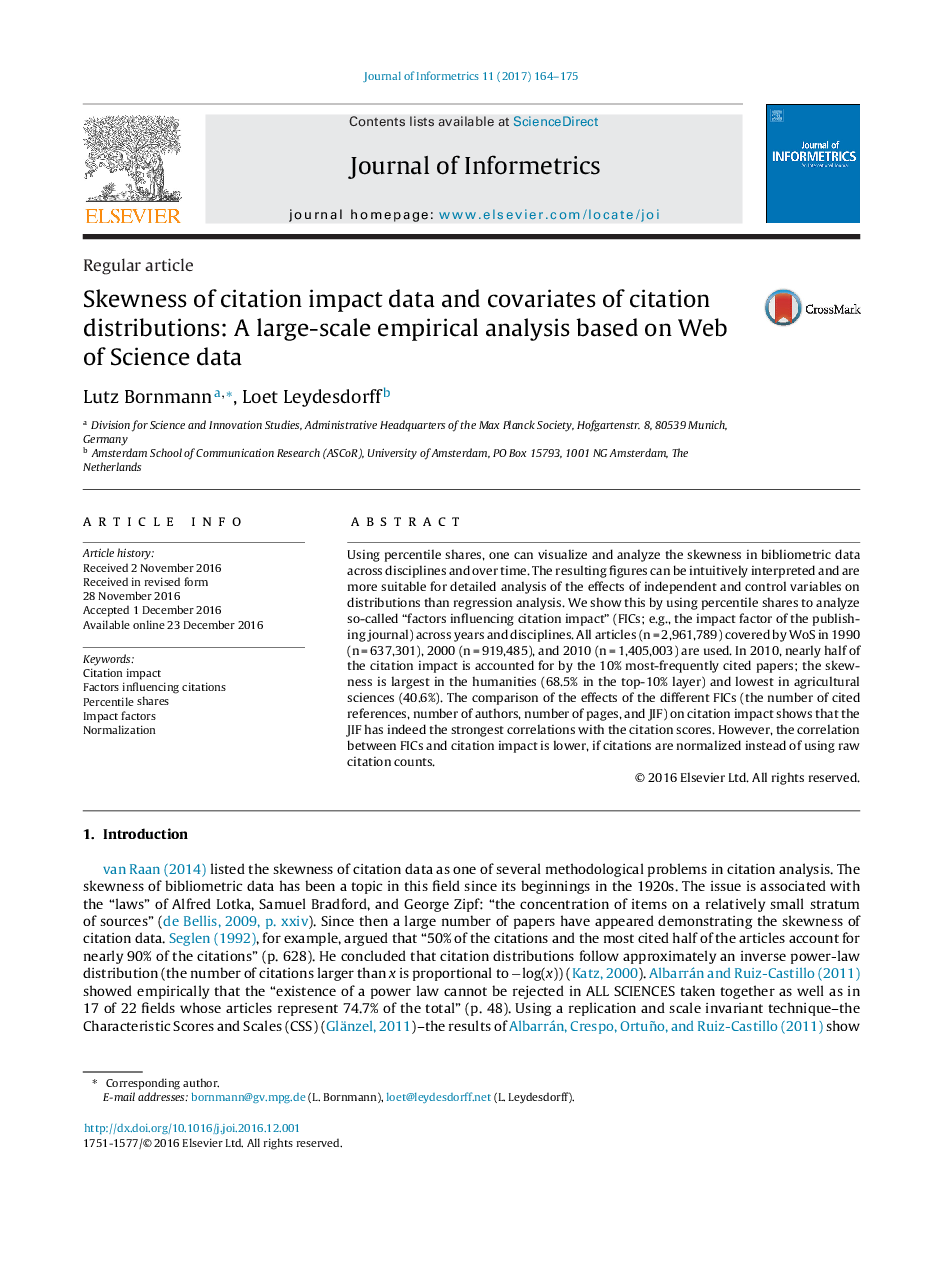| Article ID | Journal | Published Year | Pages | File Type |
|---|---|---|---|---|
| 4968117 | Journal of Informetrics | 2017 | 12 Pages |
â¢We analyze factors influencing citation impact, e.g., the impact factor of the publishing journal, the number of co-authors.â¢All articles (n = 2,961,789) covered by WoS in 1990 (n = 637,301), 2000 (n = 919,485), and 2010 (n = 1,405,003) are used.â¢In 2010, nearly half of the citation impact is accounted for by the 10% most-frequently cited papers.â¢The comparison of the correlations between FICs and citation impact shows that the JIF has indeed the largest correlation.â¢Correlation between FICs and citation impact is reduced, if citations are normalized instead of using raw citation counts.
Using percentile shares, one can visualize and analyze the skewness in bibliometric data across disciplines and over time. The resulting figures can be intuitively interpreted and are more suitable for detailed analysis of the effects of independent and control variables on distributions than regression analysis. We show this by using percentile shares to analyze so-called “factors influencing citation impact” (FICs; e.g., the impact factor of the publishing journal) across years and disciplines. All articles (n = 2,961,789) covered by WoS in 1990 (n = 637,301), 2000 (n = 919,485), and 2010 (n = 1,405,003) are used. In 2010, nearly half of the citation impact is accounted for by the 10% most-frequently cited papers; the skewness is largest in the humanities (68.5% in the top-10% layer) and lowest in agricultural sciences (40.6%). The comparison of the effects of the different FICs (the number of cited references, number of authors, number of pages, and JIF) on citation impact shows that the JIF has indeed the strongest correlations with the citation scores. However, the correlation between FICs and citation impact is lower, if citations are normalized instead of using raw citation counts.
